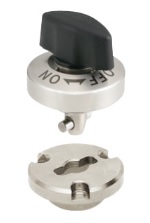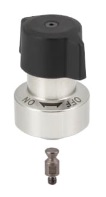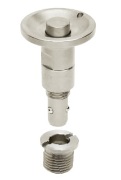What is SMED ?





SMED (Single-Minute Exchange or Die)
What is SMED?
SMED (Single-Minute Exchange or Die) is a lean manufacturing method designed to minimize the time it takes to switch from one production process to another. The goal is to make these transitions fast and efficient, ideally taking less than ten minutes. This process reduces downtime, improves productivity, and ensures operational flexibility.
An advanced variation of SMED is One-Touch Exchange or Die (OTED), which pushes the changeover time to under 100 seconds. This concept was pioneered by Shigeo Shingo, a renowned Japanese industrial engineer.
The 7 Steps of SMED
The SMED method provides a structured approach to reducing changeover times. Here are the seven essential steps:
1. Observe the Current Method
Start by analyzing the current changeover process. Document every step to identify inefficiencies and opportunities for improvement.
2. Separate Internal and External Activities
Differentiate between:
-
Internal Activities: Tasks that can only be performed when the machine or system is stopped.
-
External Activities: Tasks that can be carried out while the machine is running.
For example:
-
Internal: Changing a die after the machine stops.
-
External: Preparing tools or materials before the machine stops.
3. Convert Internal Activities to External Activities
Where possible, modify internal tasks to be completed externally. For instance:
-
Pre-heating tools or preparing setups while the machine is still operating.
4. Streamline Internal Activities
Simplify the remaining internal tasks to reduce their execution time. For example:
-
Use quick-release clamps instead of traditional fasteners.
5. Streamline External Activities
Optimize external tasks to ensure they are executed efficiently. For instance:
-
Organize tools and materials in a designated, easy-to-access area.
6. Document the New Procedure
Create detailed documentation of the updated process to standardize operations and ensure consistency.
7. Repeat the Process
Continuously iterate and refine the SMED process. On average, each iteration can yield a 45% improvement in changeover time, and it may take multiple cycles to achieve the desired goal of under ten minutes.
Benefits of SMED
Implementing SMED offers several advantages:
-
Increased Productivity: More time spent on production rather than changeovers.
-
Cost Savings: Reduced labor and machine idle time.
-
Flexibility: Quicker response to market demands or customer orders.
-
Improved Quality: Standardized processes reduce errors during setup.
